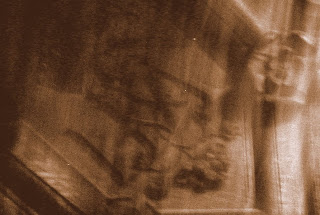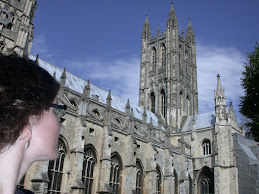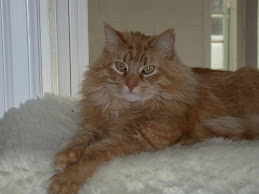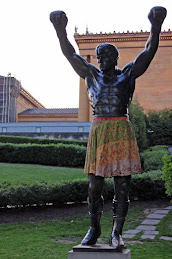July 1, 2010Today was a day of total walking. It began after breakfast and a tube ride from St. James to Tower Hill on the District Line. This meant 7 stops going east. Once there, I walked to the entrance to the Tower. I wanted to arrive early because I had read in the guidebooks that the Tower gets crowded very quickly in the summer – and they were not wrong.
Most of the morning was spend touring the Tower, using an audio guide and then an official guide. The Tower was first built by William the Conqueror to control the populace after he vanquished Harald at Hastings. It was at first a royal residence and defensive structure and then later acquired its more sinister reputation. You see, the Tower was quite secure – a safe haven for the monarchs and a strong jail for the prisoners.
Not all the prisoners were put in dungeons. The royal ones – such as Anne Boleyn and Elizabeth I – were held in royal apartments. Anne was held in the same rooms where she stayed before her coronation – these were room Henry VIII had redecorated for her in 1533. Walter Raleigh was held in the Bloody Tower and his wife came to visit him there. In fact, they had a son while he was imprisoned. How is that for conjugal visiting privileges?
I also saw the water gate, which is now called the Traitor’s Gate. Originally the gate was opened to allow the king’s barge to dock when he came to the Tower on the Thames. The gate is wide enough so that the entire barge can enter. The water gate is directly below the royal apartments in the Thomas More Tower (I need to check the name of this tower). In this tower, I saw the royal apartments where Henry VII’s Elizabeth gave birth and died. I also saw a bed made up for the king. There was an interesting display that allowed you to touch the samples of various materials which made the mattresses (straw vs horse hair vs feathers), bolsters, sheets of linen, coverlets of tapestry and curtains of rougher tapestry.
In the White Tower was an armor display (you children would have loved this given that you always make me go into the Philadelphia Fine Art Museum’s armor room). There I saw the two suits of armor made for Henry VIII – one when he was young, thin and had a 34 inch waist and one when he was old, fat, and had a 54 inch waist. The armor was composed of many pieces and fit together like a puzzle depending on what activity the king was engaged in – jousting, foot combat, or real battle.
Also in the White Tower is the King’s Chapel, a fine example of Romanesque architecture. Now this chapel I found astonishing. It was here Henry married Katherine of Aragon. It was here that the kings worshipped privately. Only they could stand on the main floor of the chapel. All others had to stand on the balcony looking down at the king at worship. The guide mentioned that you could come back and attend Sunday service. The service is a 9 am and I plan on being there! Who could resist not praying where the kings and queens have prayed?
After the tour, I took the subway again to catch a London Walks tour of Old Westminster. That was quite interesting and covered a huge swath of history. Of particular interest was the tour through the back streets where the politicians lived. David showed us the house where the British Neo-Nazi movement began and then he pointed out the house literally around the corner where Churchill and his friends began the Anti-appeasement Movement. I also walked by the house where Lawrence revised his book The Seven Pillars of Wisdom.
We saw many things on this walk and I don’t want to enumerate them all right now, but I must talk about attending evensong at Westminster Abbey.
In this Abbey is buried Edward the Confessor. In this abbey William was crowned king on Christmas Day 1066.
It was a lovely service in the nave of the church. Organ music played a prelude before the choristers entered in a double line. They stood on either side of the choristers nave composed of wooden seats with little lamps with little white shades before each seat. The back walls of the choristers nave were painted a rich blue and ornamented with gold leaf spires, arches, and curliques. The choristers sang antiphonally, passing the lines back and forth across the nave of the church and the sound soared to the top of the gothic arched roof.
I sat in the front row, facing opposite rows of seats and behind the people-filled seats, I caught glimpses of Poet’s Corner.
The service was a special one because in attendance for the first time was the High Commissioner of Rwanda and his wife. She read the second lesson from the Gospel of Matthew. She read well, but her voice was soft and I did not catch all the words. What an intimidating setting for a visitor – even the High Commissioner’s wife. We also said amen to a special prayer for the peace of security of Rwanda.
When the service was over, we were ushered out of the Abbey. Heaven forbid that we might wander about and sightsee when we had not paid admission of 15 pounds. But as I was leaving, I walked over the grave of Charles Darwin and saw the sculpture for Sir Isaac Newtown and paused at the tomb of the Unknown British Soldier from the Great War and saw the memorial stone reminding us all to remember Winston Churchill who led Britain through its darkest hours.
After this, I decided to get some dinner. I had eaten nothing all day. Not even a snack from my back pack and I had had almost nothing to drink. I am not sure the half pint I had at St. Stephen’s before the tour counts. So I walked west along the south bank of the Thames and walked 20 minutes or so to the Founder’s Pub where the night before I had gulped down a pint because the tour guide wanted to leave. I had a more leisurely meal tonight – one of the evening specials of fish, chips, and salad and a pint of Gold. It was a lovely, quiet meal and I caught my breath and sent a couple e-mails back home to my husband and children.
I emerged to a quiet dusk and walked a little further to the New Globe and took a few pictures. A lovely Estonian woman volunteered to take my picture in front of the wrought iron gate to the New Globe if I would take hers. It seemed a fair bargain and the picture she took did not turn out too bad. Then I took several more pictures of the various animals ornamenting the gate. Each one was mentioned in a play such as Hamlet’s crab and Macbeth’s bear. I could not find Lear’s pelican but I am sure it was there.






 Today I went walking absurdly early in the morning and I took these two pictures.
Today I went walking absurdly early in the morning and I took these two pictures.









